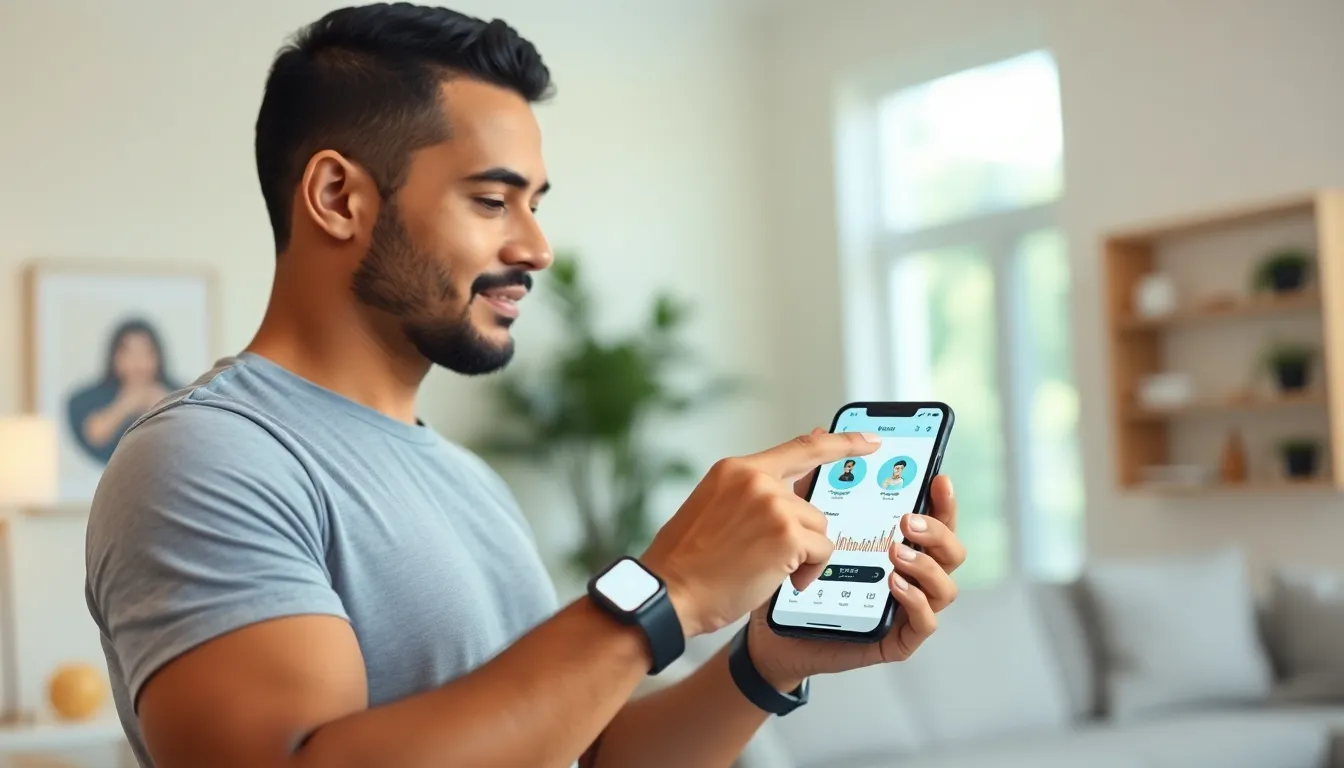Table of Contents
ToggleIn a world where smartphones can order pizza and remind you to drink water, why not let technology help with health too? Connected health is revolutionizing the way people manage their well-being, making it as easy as swiping right on a dating app. Imagine having your doctor just a text away or tracking your fitness goals with a gadget that’s more stylish than your favorite watch.
This isn’t just about fancy gadgets; it’s about empowering individuals to take charge of their health. With connected health, everyone can access real-time data, personalized insights, and support from professionals without needing to wear a lab coat. Get ready to embrace a future where health management is as seamless as scrolling through social media.
Overview of Connected Health
Connected health refers to the convergence of technology and healthcare, leading to improved patient outcomes and streamlined care. This approach integrates devices, applications, and telehealth services to foster communication between patients and providers. Real-time health data comes from wearables, mobile apps, and connected devices.
Such technology enables individuals to monitor their health metrics, enhancing engagement in personal wellness. For instance, fitness trackers provide insights into daily activity levels and sleep patterns. Furthermore, connected health platforms allow users to access medical advice promptly, making healthcare more immediate.
Communication plays a vital role in connected health. Patients can share data with providers, enabling tailored treatment plans. Consultation via telemedicine services has gained traction, providing access to healthcare professionals without the need for physical appointments.
Analytics also enrich connected health experiences. Healthcare providers can utilize aggregated data from various sources to detect health trends and assess population health. According to studies, this data-driven approach contributes to preventive health measures, reducing the likelihood of chronic disease escalation.
Connected health transforms how individuals approach their well-being. It empowers proactive health management through the use of technology, encouraging informed decisions for healthier living. Engaging with resources in real time makes health management accessible and efficient.
Key Components of Connected Health

Connected health encompasses various tools that enhance personal health management. Key components include wearable devices and health monitoring apps, each serving distinct functions.
Wearable Devices
Wearable devices play a vital role in connected health. These gadgets track vital signs like heart rate, sleep patterns, and activity levels. Users receive real-time feedback on their health metrics and can set fitness goals, boosting accountability. Many wearables sync with smartphones, allowing for seamless data sharing with health apps. Integration with telehealth services enables remote consultations, enhancing accessibility. Statistics show that consistent use of wearables improves health outcomes, as individuals become more engaged in their wellness journeys.
Health Monitoring Apps
Health monitoring apps empower users to manage their health proactively. These applications collect and analyze data from various sources, providing personalized insights into health trends. Users can log medication schedules, track symptoms, and manage chronic conditions. Many health apps offer reminders and helpful tips tailored to individual needs. By facilitating communication with healthcare providers, these apps support informed decision-making. Research indicates that regular use of health monitoring apps correlates with better adherence to treatment plans and improved patient-provider relationships.
Benefits of Connected Health
Connected health technology provides numerous advantages, improving how individuals manage their health.
Improved Patient Engagement
Patient engagement increases as connected health tools offer real-time data and insights. Individuals are more likely to participate actively in their health journeys when equipped with informative resources. Utilizing wearables enhances accountability, leading to better lifestyle choices. Analytics provide tailored recommendations that resonate with personal health goals. Increased connection to healthcare providers fosters a sense of partnership, empowering patients to take control of their health outcomes. Involvement in treatment decisions boosts adherence to plans, creating a more proactive approach to wellness.
Enhanced Data Sharing
Data sharing flourishes through connected health platforms that enable seamless communication between patients and providers. Individuals can send health metrics in real-time, facilitating timely interventions as needed. Healthcare professionals access comprehensive data, allowing for more informed decisions regarding treatment options. This continuous flow of information improves provider-patient relationships, fostering trust and transparency. Dedicated apps and wearables simplify logging symptoms and monitoring conditions, resulting in a holistic view of well-being. Quality care improves through the integration of shared insights, enhancing overall health management strategies.
Challenges in Implementing Connected Health
Connected health faces several challenges that can hinder its effectiveness. Privacy concerns often top the list, as patients worry about the security of their personal health data. Healthcare providers must implement robust security measures and encryption protocols to safeguard sensitive information. Research shows that 49% of consumers feel uneasy about sharing health data due to these privacy risks. Without trust in security practices, patients may resist using connected health solutions.
Integration with existing systems presents another significant challenge. Many healthcare facilities rely on outdated technologies that complicate data sharing. Successful implementation necessitates compatibility between new connected health tools and existing electronic health records (EHRs). Stakeholders should invest in interoperability solutions to enable seamless communication across platforms. Approximately 67% of healthcare leaders emphasize the need for improved integration to enhance patient care and overall healthcare efficiency.
Future Trends in Connected Health
Connected health technology continues evolving, with several trends shaping its future landscape. Artificial intelligence (AI) integration enhances data analysis, allowing healthcare providers to offer precise insights. Technologies such as machine learning can predict health issues based on historical data, empowering proactive healthcare measures.
Wearable devices will play an increasingly critical role, incorporating advanced features like blood glucose monitoring and stress tracking. These enhancements deliver comprehensive health data, encouraging users to engage more deeply in their wellness journey. Research shows that users are more likely to adhere to health plans when using these innovative devices.
Telehealth services will expand, providing more accessible and convenient care options. Video consultations and remote monitoring will become standard practices, improving patient experiences and reducing wait times. Such accessibility directly addresses the barriers many face in obtaining healthcare.
Data security remains a priority as trends continue shifting. Providers and developers must implement robust security measures to protect personal health information. Ensuring patients feel confident in data sharing influences engagement levels and overall trust in connected health solutions.
Collaboration between tech companies and healthcare professionals will also become essential. This partnership can generate tailored solutions that meet both patient and provider needs effectively. Improved integration of connected health tools into current healthcare frameworks can enhance efficiency and overall care quality.
Blockchain technology is poised to revolutionize data management. By providing a secure and transparent way to store and share health data, it can enhance patient security and streamline processes. Maintaining privacy and security will enable smoother information exchange between patients and providers.
As these trends develop, individuals will experience a more personalized approach to health management. This shift towards tailored healthcare experiences emphasizes the importance of user engagement and informed decision-making.
Connected health is reshaping the landscape of personal wellness management. By leveraging technology individuals can now access real-time data and personalized insights that empower them to take charge of their health. The integration of wearables and health monitoring apps fosters greater engagement and accountability in managing health goals.
As the industry evolves the focus on data security and seamless integration with existing healthcare systems will be crucial. Future advancements in AI and telehealth services promise to enhance accessibility and provide even more tailored solutions. Embracing these innovations will lead to improved health outcomes and a more informed approach to personal well-being.




